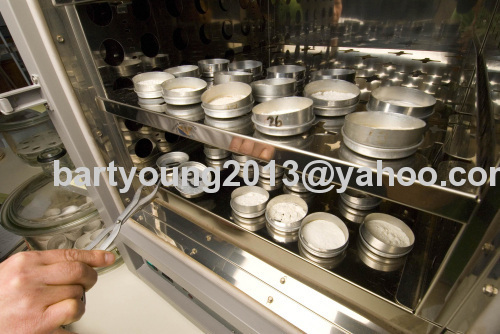Moisture Content
Moisture Content

Method
1. A small sample of flour or ground wheat (2 to 3 grams) is weighed and placed in a moisture dish.
2. The sample is heated at 130 degrees Celsius in an air oven for 1 hour.
3. The sample is cooled to room temperature and the residue is weighed.
Results
• Moisture content is determined by heating a flour or ground wheat sample in an air oven and comparing the weight of the sample before and after heating.
• The amount of weight loss is the moisture content.
• Moisture content results are expressed as a percentage. An example of a wheat moisture content is 12PERCENT.
Why is this important?
Determining moisture content is an essential first step in analyzing wheat or flour quality since this data is used for other tests. Flour millers adjust the moisture in wheat to a standard level before milling. Moisture content of 14 percent is commonly used as a conversion factor for other tests in which the results are affected by moisture content.
Moisture is also an indicator of grain storability. Wheat or flour with high moisture content (greater than 14.5 percent) attracts mold, bacteria, and insects, all of which cause deterioration during storage. Wheat or flour with low moisture content is more stable during storage.
Moisture content can be an indicator of profitability in milling. Flour is sold by weight, grain is bought by weight, and water is added to reach the standard moisture level before milling. The more water added, the more weight and profitability gained from the wheat. Wheat with too low moisture, however, may require special equipment or processes before milling to reach the standard moisture level.
Other methods of determining moisture content are used in the industry. For example, Federal Grain Inspection Service (FGIS) uses the GAC 2100 to measure moisture content of whole wheat kernels.
Adapted from Method 44-15A, Approved Methods of the American Association of Cereal Chemists , 10th Edition. 2000. St. Paul, MN.
Previous:
Ash Content
Next:
Laboratory Milling



